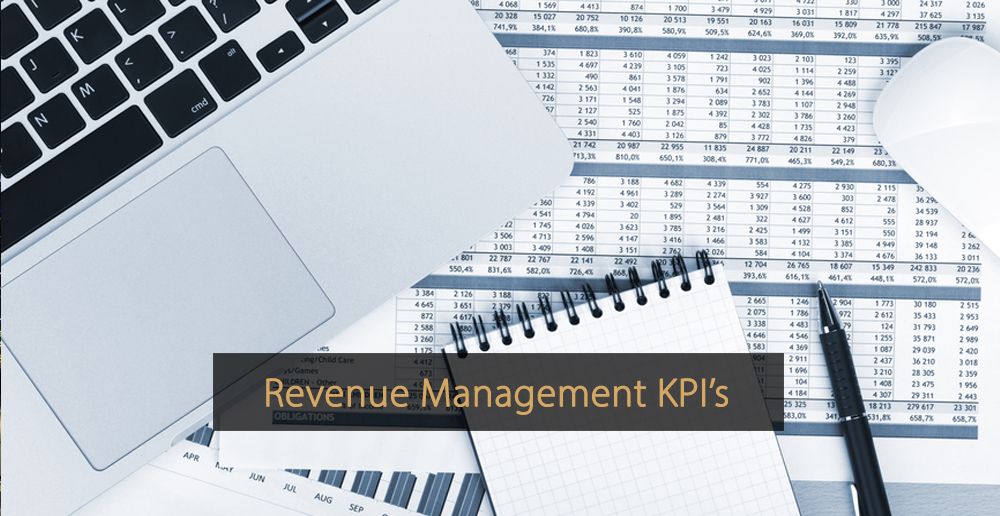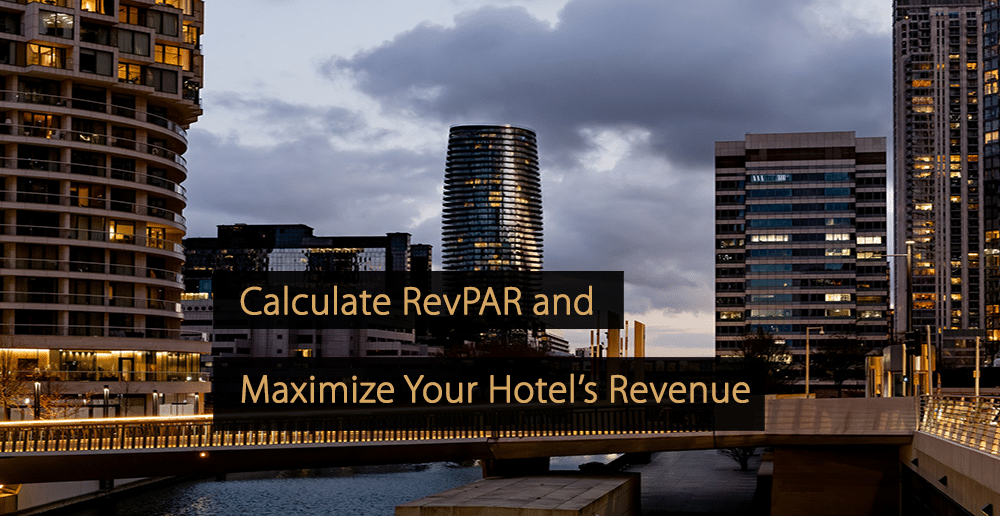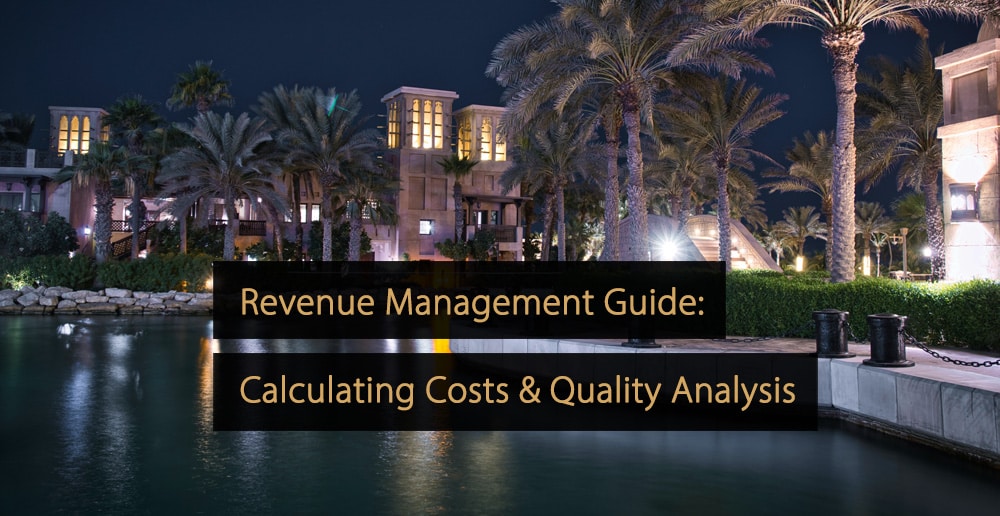A key performance indicator can provide revenue managers and hotel owners with valuable information about their business performance. This subsequently has the benefit of allowing them to implement a revenue management strategy so that they can maximize financial business results. In this post, we look at some of the most widely utilized revenue management KPIs and how they can help you.
Table of Contents:
- What Are Revenue Management KPIs?
- Most Used Revenue Revenue Management KPIs
- Importance of Revenue Management KPIs
- What Is Revenue Management?
- What Is Total Revenue Management?
What Are Revenue Management KPIs?
Within the hotel industry, revenue management is the practice of selling the right room to the right guest at the moment for the right price via the right distribution channel with the best cost efficiency. You can read more information about revenue management in the article “Revenue Management; clearly explained!”.
Essentially, revenue management KPIs can be described as performance metrics, which help business owners assess their business’s current state and make informed adjustments to things like pricing and strategy. As a result, these KPIs can enable hotel owners to optimize their business practices and maximize revenue.
Most Used Revenue Revenue Management KPIs
Hoteliers need to be aware of the most important revenue management KPIs that can help them succeed in their business.
1. Occupancy
Occupancy rate refers to the number of available hotel rooms occupied at any given time. It can be used to assess how efficient a hotel is at making use of the space available and can be used in conjunction with other metrics to maximize revenue. The occupancy rate is expressed as a percentage and calculated by dividing the number of occupied rooms by the total number of rooms.
Find more detailed information about occupancy rates in the article “What is an occupancy rate?”.
2. ADR
Average daily rate, or ADR, is a KPI that tells hotel management the average rental income per paid occupied room. It is not concerned with revenue that is generated from other sources, such as room service and is calculated by dividing rooms revenue earned by the number of rooms sold. It is one of the most useful revenue management KPIs, allowing for comparisons with other hotels in the nearby area or with similar characteristics.
Find more detailed information about ADR in the article “What is an average daily rate (ADR)?”.
3. RevPAR
Revenue per available room, or RevPAR, deals with the average amount of revenue generated per available room in the hotel, regardless of whether occupied or not. It can be calculated by dividing room revenue by the number of rooms available or multiplying the average daily rate by the occupancy rate. This KPI is especially useful for measuring the overall revenue-generating performance of all hotel rooms.
Find more detailed information about RevPAR in the article “What is RevPAR?”.
4. RevPOR
Like the average daily rate, revenue per occupied room, or RevPOR, is only concerned with revenue generated by rooms in use. However, it differs from that KPI because RevPOR considers all of the revenue stemming from an occupied room, so things like room service and laundry service would be included. It can be calculated by dividing the total revenue generated by occupied rooms by the number of occupied rooms.
Find more detailed information about RevPOR in the article “What is RevPOR?”.
5. GOPPAR
Finally, gross operating profit per available room, or GOPPAR as often known, is one of the most important revenue management key performance indicators because it looks at gross operating profit across all rooms, regardless of whether they are occupied. It can be calculated by dividing gross operating profit by the total number of rooms available and is a solid indicator of overall business performance across all revenue streams.
Find more detailed information about GOPPAR in the article “What is GOPPAR?”.
6. TRevPAR
Total revenue per available room, or TRevPAR, is a KPI that, much like RevPAR, focuses on the amount of revenue brought in per available room, regardless of whether those rooms have been occupied. Unlike RevPAR, however, it includes all room revenue, including money spent in the restaurant, at the bar, or on room service. It can be calculated by dividing total revenue by the number of available rooms in the hotel.
Find more detailed information about TRevPAR in the article “What is TRevPar?”.
7. NRevPAR
Net revenue per available room, or NRevPAR, is another revenue management KPI that looks at the revenue generated per available room basis. However, NRevPAR focuses on net revenue, which means distribution costs associated with selling a room are deducted from room revenue first before that figure is divided by the number of available rooms in the hotel. It can give a more accurate picture of the revenue received from the rooms sold.
Find more detailed information about NRevPAR in the article “NRevPAR Clearly Explained!”.
8. ARPA
Average revenue per account, or ARPA, is a revenue management key performance indicator used to show the average revenue generated per customer account over a particular period. It is usually calculated monthly or yearly, and the chosen time period can easily show hotel owners the average revenue value of existing customers or the value of new customers. ARPA is calculated by dividing monthly recurring revenue by the total number of accounts.
Find more detailed information about ARPA in the article “What is ARPA?”.
9. EBITDA
Earnings before interest, taxes, depreciation, and amortization, or EBITDA, is an increasingly important KPI. It is used to demonstrate the day-to-day operating profitability of a hotel after removing variables like interest rates from financing, tax rates set by different governments, and different takeover histories, as these factors can distort results. Therefore, it is especially useful when comparing the financial performance of businesses in different regions or industries. It is calculated by subtracting all other expenses from total revenue.
Find more detailed information about EBITDA in the article “What does EBITDA stand for?”.
Importance of Revenue Management KPIs
There are situations when hoteliers can employ certain revenue management KPIs that can greatly help them achieve successful results. Below is a table with some frequent situation examples and the relevant KPIs.
What Is Revenue Management?
To successfully manage a hotel, owners and business leaders need to be able to anticipate how demand will change and then optimize their pricing strategy accordingly. This is where revenue management comes in because it allows you to use data and analytics to predict consumer behavior and make necessary adjustments.
The article “What Is Revenue Management?“ takes a more in-depth look at how revenue management is defined and what it entails in practice. In addition, you will also find information on revenue management tools, some of the main strategies, and top tips for implementing revenue management in your hotel.
What Is Total Revenue Management?
The concept of total revenue management is focused on maximizing performance across all available revenue channels. For hotels, this could mean food, drinks, leisure, corporate offerings, and much more. To achieve this, data and analytics are used to predict customer behavior and optimize pricing and availability accordingly.
Read “Total Revenue Management: How Hotels Can Maximise Their Revenue“ for a closer look at total revenue management, how it can be defined, the benefits of adopting such a strategy, and some top tips for achieving success.
Revenue Management KPIs FAQs
Each of the most used revenue management KPIs has its value, although they are more useful when viewed in context alongside one another. By using key performance indicators, The hotel management can get a clearer idea about the performance of their business and make informed, data-driven adjustments to pricing and strategy.
Did You Like This Article About Revenue Management KPIs?
You might also be interested in the following articles:
- Revenue Management Strategies to Grow Your Hotel Business
- Forecasting Tips to Improve Your Revenue Management Strategy
- Open Pricing: Why Is It the Next Hotel Revenue Management Strategy
- Hotel Restaurant Management: Tips to Maximize Revenue for Your Hotel
- How Hotels Can Combine Revenue Management and CRO?
More Tips to Grow Your Business
Revfine.com is the leading knowledge platform for the hospitality and travel industry. Professionals use our insights, strategies, and actionable tips to get inspired, optimize revenue, innovate processes, and improve customer experience.Explore expert advice on management, marketing, revenue management, operations, software, and technology in our dedicated Hotel, Hospitality, and Travel & Tourism categories.
This article is written by:
Hi, I am Martijn Barten, founder of Revfine.com. With 20 years of experience in the hospitality industry, I specialize in optimizing revenue by combining revenue management with marketing strategies. I have successfully developed, implemented, and managed revenue management and marketing strategies for individual properties and multi-property portfolios.









Leave A Comment